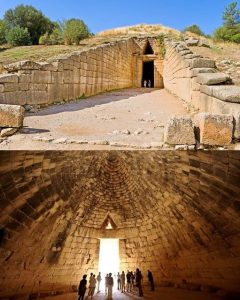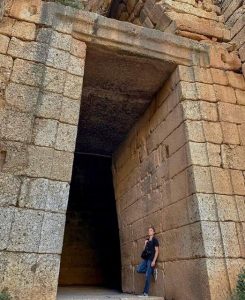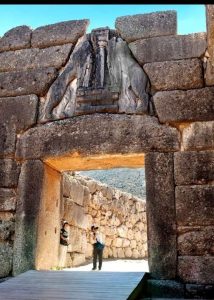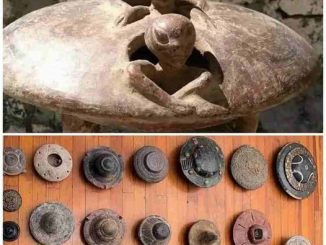Nestled in the historical landscape of Mycenae, the Treasury of Atreus, also known as the Tomb of Agamemnon, is a monumental testament to the architectural and engineering prowess of the Mycenaean civilization. Dating back to between 1300 and 1250 BC, this ancient tholos tomb represents one of the most impressive structures of the Bronze Age in Greece.
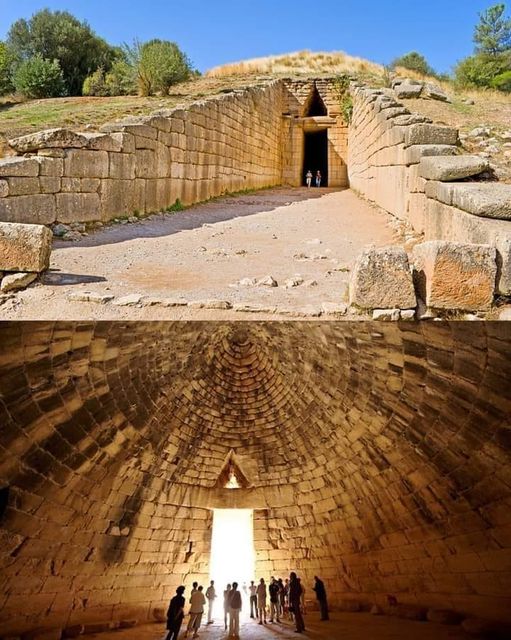
The Treasury of Atreus, captured magnificently in the photographs, showcases the grandeur of its construction. The tomb is approached through a long, narrow passageway, lined with enormous limestone blocks, culminating in a stunning beehive-shaped structure known as a “tholos.” The careful arrangement of the blocks, creating a corbelled dome, is a feat of engineering that has stood the test of time, remaining largely intact for over three millennia.
The entrance to the tomb is particularly striking, featuring a large, triangular relieving triangle above the doorway, which helps to distribute the weight of the stones and prevent the lintel from cracking under the pressure. This architectural element not only serves a structural purpose but also enhances the aesthetic appeal of the entrance, setting a precedent for subsequent Mycenaean tombs.
Inside, the dome rises impressively to a height of about 43 feet (13 meters), making it one of the largest vaulted structures of its time. The precision with which the stones are fitted together, without the use of mortar, showcases the sophistication of Mycenaean craftsmen and their understanding of geometric principles.
The Treasury of Atreus was once believed to be the burial place of Agamemnon, the legendary king of Mycenae who played a pivotal role in the Trojan War, as recounted in Homer’s epic tales. While modern archaeology suggests that the tomb predates the life of Agamemnon, the association with this mythical king has captured the imagination of historians, archaeologists, and tourists alike.
Visitors to the site are often awed by the sheer size and the mysterious aura of the tomb. The play of light as it enters the tomb through the doorway illuminates the interior, creating a dramatic effect that highlights the tomb’s spiritual and ceremonial functions. This lighting effect, particularly during the equinoxes, suggests that the Mycenaeans may have aligned the tomb with celestial events, further indicating their advanced understanding of astronomy.
The Treasury of Atreus not only offers a glimpse into the funerary practices of the Mycenaeans but also into their social hierarchy, indicating that such monumental tombs were reserved for the society’s elite. The riches that would have once accompanied the buried, although long since looted, are hinted at by the tomb’s grandeur and the precious materials used in its construction.
Today, the Treasury of Atreus continues to be a focal point for studies on Mycenaean architecture and culture, as well as a compelling destination for those traveling through Greece’s Peloponnesian peninsula. As one stands inside this ancient tomb, it is easy to feel a profound connection to the distant past, and to appreciate the remarkable achievements of a civilization that continues to influence architectural designs to this day.
